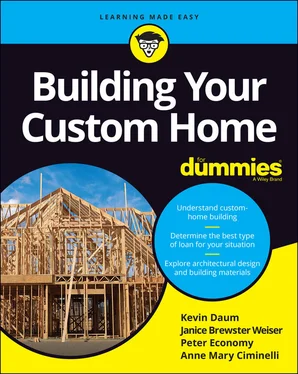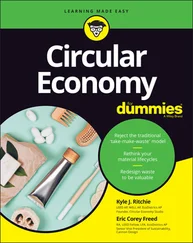1 ...6 7 8 10 11 12 ...20 Staying in close contact requires you to have immediate portable access to phone numbers for your contractor, architect, loan officer, and other key players.
Be sure to create contacts in your smartphone for every team member on your project. Fill out the contact information as fully as possible so you don’t get confused between Phil the trim carpenter and Phil from your city’s building department. Sharing contacts with your partner or other interested parties is a good way to keep everyone in the loop on the project.
 If electronics aren’t your thing, we highly recommend a Franklin Planner from
If electronics aren’t your thing, we highly recommend a Franklin Planner from www.franklincovey.com . They come in many sizes that can also serve as your planning notebook. You can keep all your contact information, as well as your calendar, with a pencil and have it ready whenever you need it. And if you use a planner, your batteries will never go dead because — unlike smartphones and laptops — planners never have to be charged!
Being the bean counter: Keeping track of your finances
Even though you may have a contractor and bank involved, ultimately, the job of managing the finances falls on you. You need to keep track of every dollar spent as you go, or you can have a very unpleasant surprise: running out of money in the middle of the project.
 We recommend setting up a separate bank account early on for everything construction related. Setting up this account can help remove confusion and allow for easier record keeping. Keeping a file for each vendor and filing invoices and receipts in chronological order also make life easier when looking for something later. Loose papers become a nightmare when you need something quickly. (See the “ Building a workbook and portable file system” section, earlier in this chapter, for specific tips on keeping files organized.)
We recommend setting up a separate bank account early on for everything construction related. Setting up this account can help remove confusion and allow for easier record keeping. Keeping a file for each vendor and filing invoices and receipts in chronological order also make life easier when looking for something later. Loose papers become a nightmare when you need something quickly. (See the “ Building a workbook and portable file system” section, earlier in this chapter, for specific tips on keeping files organized.)
If you’re comfortable using a computer, managing the finances is an easier task. You can manage your finances with a simple bookkeeping ledger book, but you can keep track of money in and money out in all the different categories of the build smoothly and efficiently with the help of an application like Buildshop ( www.buildshop.com ).
Shopping and sharing: Collecting material information
The biggest assignment you have in this project is … to go shopping! You need to choose hundreds of items for your house, and the sooner you start saving pictures, screen-grabbing ideas, setting up Pinterest boards, and dog-earing catalogs, the better. (We provide a basic list of choices to be made in Chapter 5.) Magazines, catalogs, and the Internet are your best bet for finding hardware and fixtures.
 Storing pictures electronically makes for easier communication with your architect and contractor. Houzz (
Storing pictures electronically makes for easier communication with your architect and contractor. Houzz ( www.houzz.com ) and Pinterest ( www.pinterest.com ) are two places where you can save images and share them with your professional team. You can also set up a shared folder on Dropbox or Google Drive. If your builder uses an online tracking tool, they may offer photo storage and sharing as well.
A budget for a custom-home project is a living, breathing animal. It will grow and shrink many times before the house is finished. Okay, it usually grows more than it shrinks, but the point is that it changes — a lot! You have to start somewhere. This section can help you create a preliminary budget to get started.
 We provide more specific budgeting help in Chapter 10where we explain how a lender budgets your project. If you’re financing this project through a lender, the lender’s budget takes precedence over yours, so you need to get the two in line as soon as possible.
We provide more specific budgeting help in Chapter 10where we explain how a lender budgets your project. If you’re financing this project through a lender, the lender’s budget takes precedence over yours, so you need to get the two in line as soon as possible.
Budgeting at the beginning of the custom-home process is a bit of a chicken-and-egg situation. You have to balance out the cost of the house with what you can afford. The problem is that the house may require more money than you have, which you can’t figure out until you design the house, and so on. The best method is to evaluate the two issues separately and then work to a compromise.
Looking at your finances and cash flow
Chances are, your lender will heavily influence your budget by determining an amount to lend you. But just because the lender says you can afford a million dollars doesn’t mean you’ll be comfortable spending that much money or making those payments. The best way to create a budget you can live with is to work with your certified public accountant (CPA), financial adviser, and loan officer to assess how all factors will impact your finances. Make sure you discuss and take into account the following:
Cash on hand
Capital gains issues
Current tax bracket
Diversification of assets
Intended length of time owning the home
Long-term investment strategy
Property appreciation
Tax deductions for interest and points
Armed with this information, you need to arrive at a comfortable payment that a loan officer or loan calculator can translate into a loan amount. You can find a variety of these calculators at Bankrate ( www.bankrate.com/calculators ) among other places.
 The mortgage information set out by these calculation sites is basic information and doesn’t totally apply to construction loan qualification. These sites can give you a rough estimate to work with in preliminary stages, but you need to speak to a loan officer who is a qualified construction loan specialist to be assured you qualify for a construction loan. (You can find specific information on construction loan underwriting and on finding a loan officer in Chapters 9and 10.)
The mortgage information set out by these calculation sites is basic information and doesn’t totally apply to construction loan qualification. These sites can give you a rough estimate to work with in preliminary stages, but you need to speak to a loan officer who is a qualified construction loan specialist to be assured you qualify for a construction loan. (You can find specific information on construction loan underwriting and on finding a loan officer in Chapters 9and 10.)
 Many people who claim to be loan specialists may have only arranged one or two construction loans in their careers. Educate yourself, and be prepared to be flexible, because circumstances may be unusual and guidelines may change throughout the course of your project.
Many people who claim to be loan specialists may have only arranged one or two construction loans in their careers. Educate yourself, and be prepared to be flexible, because circumstances may be unusual and guidelines may change throughout the course of your project.
After you have a loan amount, you need to account for the cash available. As we discuss in Chapter 8, you need a good amount of cash to run this project. You may not want to spend it all, but cash is your surest way of keeping a custom-home project running smoothly. Don’t forget to include money you can take out of your existing house through a credit line or refinance. After you’ve decided how much of your cash you want to spend without being reimbursed by the construction loan on your project, add it to your loan amount estimate for the total estimate of your custom-home budget.
 Just because you can afford a large budget doesn’t mean that the property will support the amount you want to spend. Many other factors can impact your budget later in the process, such as the requirements of your property and sales in your neighborhood. (We discuss these elements extensively in Chapters 3and 5.)
Just because you can afford a large budget doesn’t mean that the property will support the amount you want to spend. Many other factors can impact your budget later in the process, such as the requirements of your property and sales in your neighborhood. (We discuss these elements extensively in Chapters 3and 5.)
Читать дальше

 If electronics aren’t your thing, we highly recommend a Franklin Planner from
If electronics aren’t your thing, we highly recommend a Franklin Planner from  The mortgage information set out by these calculation sites is basic information and doesn’t totally apply to construction loan qualification. These sites can give you a rough estimate to work with in preliminary stages, but you need to speak to a loan officer who is a qualified construction loan specialist to be assured you qualify for a construction loan. (You can find specific information on construction loan underwriting and on finding a loan officer in Chapters 9and 10.)
The mortgage information set out by these calculation sites is basic information and doesn’t totally apply to construction loan qualification. These sites can give you a rough estimate to work with in preliminary stages, but you need to speak to a loan officer who is a qualified construction loan specialist to be assured you qualify for a construction loan. (You can find specific information on construction loan underwriting and on finding a loan officer in Chapters 9and 10.) Just because you can afford a large budget doesn’t mean that the property will support the amount you want to spend. Many other factors can impact your budget later in the process, such as the requirements of your property and sales in your neighborhood. (We discuss these elements extensively in Chapters 3and 5.)
Just because you can afford a large budget doesn’t mean that the property will support the amount you want to spend. Many other factors can impact your budget later in the process, such as the requirements of your property and sales in your neighborhood. (We discuss these elements extensively in Chapters 3and 5.)










